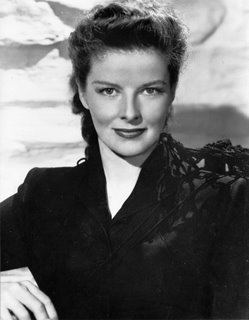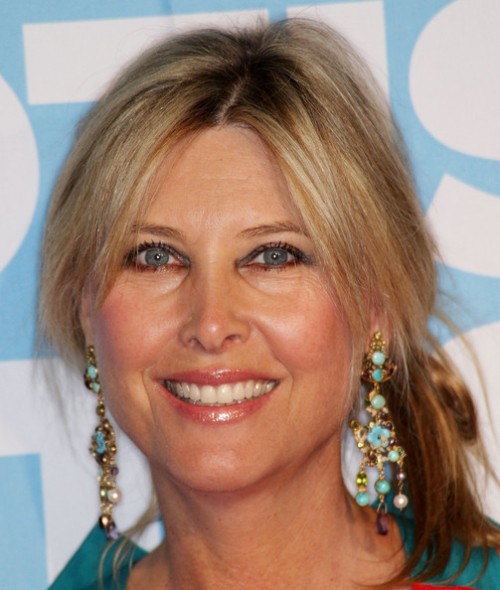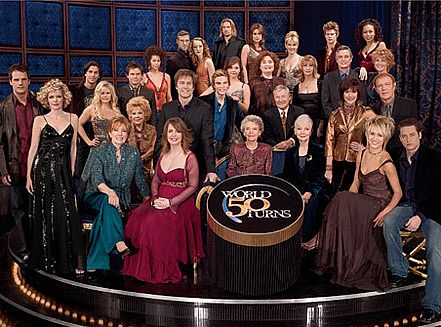Part 1 of Chapter 9 in the book Looks
In this chapter, Dr. Patzer talks about the dark side of physical attractiveness. He tells us facts about anorexia, bulimia, and other unhealthy behavior that may occur.

Deleese Williams
The chapter starts with talking about a woman named Deleese Williams. He describes her like this.
Her jaw was deformed, crooked teeth crowded her mouth, her eyes drooped, and her breasts were hard to find.
She had a childhood of endless horror. Her classmates made fun of her. Her marriage was a disaster, with her husband abusing her and letting her know constantly that she wasn’t much to look at.
Williams had hope when she heard about Extreme Makeover. This was a reality program that gave ugly people like Williams the gift of beauty. People enjoyed watching that show, for whatever reasons. Anyway, she applied to the show in 2003. The producers were delighted. Soon, Williams was meeting with the executives and team. Describing it, she said that the psychologist and the physicians told her that she “needed” her eyes lifted, her ears pulled back, and breast implants as well as chin implants. They also concluded that dental surgery was needed. They promised her that the free makeover would “transform her life and destiny.”
 However, the producers wanted to let the audiences see how being ugly is so very problematic. Beauty is good, and its absence is bad, after all. Remember our first post? They sat Williams in front of a camera and had her describe how being ugly had invited the cruel teasing and abuse by her husband. Even though her family didn’t notice (or pretended not to notice) her ugliness, they were coached to focus on her flaws.
However, the producers wanted to let the audiences see how being ugly is so very problematic. Beauty is good, and its absence is bad, after all. Remember our first post? They sat Williams in front of a camera and had her describe how being ugly had invited the cruel teasing and abuse by her husband. Even though her family didn’t notice (or pretended not to notice) her ugliness, they were coached to focus on her flaws.
Kellie McGee, Williams’s sister, was reluctant to trash her sister. The producers essentially forced her to do so, however.
It was tough for Deleese to take. She thought it would be all worth it. Williams believed that her real life could begin at last… happy endings.
Then the bomb fell.
A producer told her that the makover, cosmetic surgery… all off. Why? It didn’t fit in the show’s time frame. The doctors told her that the recovery time and surgery would take a much longer time than the duration of the show.
The tragic part, says her attorney, was that she became too ashamed to go out in public. Even worse, her sister, who had been forced to speak disparagingly about Williams’s looks, killed herself. She had beens struggling with bipolar disorder for some time.
ABC and Disney offered their condolences, yet said that they bore no responsibility since Deleese had known that they could call the whole thing off at any time.
 Beyond this example, physical appeal centered media messages continues to encourage unhealthy conditions on millions.
Beyond this example, physical appeal centered media messages continues to encourage unhealthy conditions on millions.
Eating disorders have become common in America. This is accompanied by a preoccupation with food and weight, and those with an ED often share physical symptoms with those who have experienced starvation. This is also marked by an obsession with food.
In 2003, a team led by Dr. Hans Steiner of Stanford University learned that mothers with eating disorders demonstrated greater concern over their children’s eating habits. By the time the children were age 5, they displayed the same symptoms found in teenagers with eating disorders. He was surprised to learn that half of the children of elementary age wanted to weight less. Three-fourths cited their family as the primary source of dieting related information.
There are three distinct types of eating disorders, not counting EDNOS.
1. Binge eating
2. Bulimia Nervosa
3. Anorexia Nervosa
 Binge eating is uncontrolled eating. It’s frequent, and very common. It’s accompanied by the feeling of being out of control. People who binge eat often feel depressed, guilty, or disgusted when they do so.
Binge eating is uncontrolled eating. It’s frequent, and very common. It’s accompanied by the feeling of being out of control. People who binge eat often feel depressed, guilty, or disgusted when they do so.
I know a few girls who have problems with binge eating. In fact, I know a lot. However, in their case, the binge is followed by a purge. This brings us to bulimia nervosa.
The Gale Encyclopedia of Medicine has described this condition as a serious, life-threatening eating disorder affecting mainly young women. They eat large amounts of food, then try to lose all the calories by fasting, exercising, or vomiting or using laxatives. This is known as “purging.” At first, it was hailed as a new weight loss trick. The women could eat whatever they want, and then throw it up later. They’re not gaining any calories, and they still get the cravings down, right?
Wrong. This is an extremely unhealthy practice. It’s even considered a psychiatric illness.
 Over 2 million people suffer from this. In rare instances, bingeing can cause the stomach to burst. Purging brings heart failure from loss of vital minerals. Vomiting leads to acid-related scarring of the fingers (once I saw a site where a girl, knowing this, encouraged her friends to vomit using the end of a toothbrush instead of their fingers). The esophagus becomes inflamed from acid burns. There’s also irregular menstruation, to name only a few.
Over 2 million people suffer from this. In rare instances, bingeing can cause the stomach to burst. Purging brings heart failure from loss of vital minerals. Vomiting leads to acid-related scarring of the fingers (once I saw a site where a girl, knowing this, encouraged her friends to vomit using the end of a toothbrush instead of their fingers). The esophagus becomes inflamed from acid burns. There’s also irregular menstruation, to name only a few.
Few are able to stop this behavior without professional help. It seems to me that they have really lost control. 90% are women in their teens or early 20s. Many live secret lives in that they appear to be doing well on the outside, but run off after meals to purge in their bathrooms.
The root causes remain mysterious. Maybe it could be genetic and environmental. It could be due to family pressures, like in the case of one girl I know. Girls with eating disorders often have fathers, mothers, brothers, or boyfriends who criticize their weight.
I do know some people who are bulimics but starve themselves for periods. This brings us to anorexia nervosa, a still more dangerous condition.
 Anorexia nervosa is self-induced starvation. The person with it refuses to eat. Even though she’s becoming thinner and thinner, she still sees herself as far too heavy. A few starve themselves to death, but most have life-shortening health disorders from lack of nutrients.
Anorexia nervosa is self-induced starvation. The person with it refuses to eat. Even though she’s becoming thinner and thinner, she still sees herself as far too heavy. A few starve themselves to death, but most have life-shortening health disorders from lack of nutrients.
This disorder brings the highest mortality rates of any psychiatric illness. 6% to 10% die. That’s a higher rate than for cancer. It’s the most challenging disorder to treat, as it involves dealing with the physical and emotional issues as well as with body image distortion.
Dr. Joel Jahraus, a nationally known expert on eating disorders, talked about one of his patients. Her name was Anna Westin, and he described her as a lovely young woman. However, she struggled with anorexia nervosa. Her body weight was dangerously low, and her moods changed fast. Dr. Jahraus, seeing this, recommended hospitalization.

Anna Westin
However, the insurance company didn’t want that. They said that she wasn’t ill enough to get hospitalized. For a brief time, though, they agreed. She was stabilized with IV nutrition and psychological work. After that, the company declared that she should be treated as an outpatient. When Anna found out, she lost motivation to continue treatment. “I can’t be that bad,” she said.
A few weeks later, Anna intentionally took her own life by swallowing an overdose of diet pills.
Her parents established the Anna Westin Foundation, which was dedicated to the prevention and treatment of eating disorders and raising public awareness to the cause. This included the Anna Westin House, which combines treatment with cost-effective care. Maybe it’s something you should look into.
I have also seen many sites raised to help those struggling with eating disorders. No, it’s not what you think. These sites offer tips (links not for the faint-hearted) on how to purge without parents and friends finding out. There’s lots of tips on how to disguise that you’re starving yourself, with pictures of bony celebrities as inspiration to starve. Many of these girls, looking for acceptance, turn to these sites to find it. At least they’ll find someone who understands what they’re going through, they think. They’re encouraged by words like, “Stay strong! Starve on!” Sometimes these words are what keeps them going when they’re discouraged. After a while, they start believing that they are not ill. No, it’s a lifestyle choice.
 The danger in real recovery is that if one of the girls (or guys) visit the sites, they’ll lose their resolve and continue with the “lifestyle.” Their friends will berate them for not being strong enough and not starving like they’re supposed to. I knew a girl who was the biggest tip giver for anorexics and bulimics. She got tons of comments and praise for her “smartness and courage.” And then all of a sudden, something happened. She decided that this wasn’t the way to go. She decided that this could not continue, and she better get healthy as opposed to skinny before she lost it all.
The danger in real recovery is that if one of the girls (or guys) visit the sites, they’ll lose their resolve and continue with the “lifestyle.” Their friends will berate them for not being strong enough and not starving like they’re supposed to. I knew a girl who was the biggest tip giver for anorexics and bulimics. She got tons of comments and praise for her “smartness and courage.” And then all of a sudden, something happened. She decided that this wasn’t the way to go. She decided that this could not continue, and she better get healthy as opposed to skinny before she lost it all.
She lost her audience. People didn’t say anything. They ignored her. For a person who had received upward of 50 comment per post, that was hard for her.
It’s so easy to shatter.
Just looking at the pictures of celebrities that these girls use to keep them starving, don’t tell me that the media has no hand in it. I remember when one of the celebrities (forgot her name) was said to have an eating disorder. There was buzz, and many of my friends praised her as an inspiration and a strong woman for trying to starve herself to perfection.
I felt nauseated.
We shouldn’t be focused on our own bodies when we have this in the world. We shouldn’t be pushing ourselves to starve to skeletons when there actually are children in Africa who have no choice but to starve every single day of their lives. 26,000 children perish every day due to preventable causes: poverty, disease, and hunger.
Maybe the problem is that we’re too used to looking at ourselves instead of others. We gaze at ourselves in the mirror, and we fail to see the crisis happening around us.

A starving child in Uganda



 I thought Max Factor was the name of a mascara.
I thought Max Factor was the name of a mascara. L’Oreal is now the world’s largest cosmetic merchant. They reported their annual sales in 2006 to be 15.8 billion.
L’Oreal is now the world’s largest cosmetic merchant. They reported their annual sales in 2006 to be 15.8 billion. Others use pseudoscience. Shiseido had their Body Creator sin gel, which claimed that its ingredients could melt away over 2 inches of body fat in a month without the need of diet or exercise. Sounds familiar? It’s not that much different from Nivea’s My Silhouette cream that basically claims that their white tea melts fat cells until they don’t grow back. No need to exercise, either.
Others use pseudoscience. Shiseido had their Body Creator sin gel, which claimed that its ingredients could melt away over 2 inches of body fat in a month without the need of diet or exercise. Sounds familiar? It’s not that much different from Nivea’s My Silhouette cream that basically claims that their white tea melts fat cells until they don’t grow back. No need to exercise, either. Dr. Patzer states,
Dr. Patzer states,
 We may say that this is just the way it is. But anthropologists studied a tribe in Africa. They wanted to see whether the physical appeal stereotypes of that tribe had been influenced by the media. They found that, opposite of our like of hunky men, girls liked slender men. Another researcher showed Men’s Health to the tribe members, with some spreads of male body builders. One old guy looked at the bulging pectorals of a male body builder. “Was it a man, or a very, very strong woman?”
We may say that this is just the way it is. But anthropologists studied a tribe in Africa. They wanted to see whether the physical appeal stereotypes of that tribe had been influenced by the media. They found that, opposite of our like of hunky men, girls liked slender men. Another researcher showed Men’s Health to the tribe members, with some spreads of male body builders. One old guy looked at the bulging pectorals of a male body builder. “Was it a man, or a very, very strong woman?”
 Doctors during the US occupation of Japan injected young women’s breasts with transformer coolant to enlarge them. By the 1960s, topless showgirls in Las Vegas had liquid silicone pumped into their breasts. The American Society of Plastic Surgery described small breasts as a deformity and a disease.
Doctors during the US occupation of Japan injected young women’s breasts with transformer coolant to enlarge them. By the 1960s, topless showgirls in Las Vegas had liquid silicone pumped into their breasts. The American Society of Plastic Surgery described small breasts as a deformity and a disease.
 Consider those addicted to plastic surgery. These are the people who risk their lives and spend millions to chase after what Dr. Patzer calls artificial perfection. They are the people who appear “abnormal” but look forward to their next procedures.
Consider those addicted to plastic surgery. These are the people who risk their lives and spend millions to chase after what Dr. Patzer calls artificial perfection. They are the people who appear “abnormal” but look forward to their next procedures. Young said,
Young said,
 In cases like this, says Lorenc, the plastic surgeon is to refuse to do surgery. He gives another example, this time of a guy who thought he had an awful acne scar. Dr. Lorenc saw nothing. The worst thing he could have done would have been to operate, because then the poor guy would have had a real scar.
In cases like this, says Lorenc, the plastic surgeon is to refuse to do surgery. He gives another example, this time of a guy who thought he had an awful acne scar. Dr. Lorenc saw nothing. The worst thing he could have done would have been to operate, because then the poor guy would have had a real scar.
 That’s not all. Between 1997-2004, at least 36 individuals died in Florida as a result of complications from cosmetic surgery.
That’s not all. Between 1997-2004, at least 36 individuals died in Florida as a result of complications from cosmetic surgery.







 Have you ever seen the billboards by the side of the road glorifying a sculpted male body? Or the covers of Men’s Health magazine… or the washboard abs perfume by Abercrombie and Fitch… or the steroid pumping body builders…
Have you ever seen the billboards by the side of the road glorifying a sculpted male body? Or the covers of Men’s Health magazine… or the washboard abs perfume by Abercrombie and Fitch… or the steroid pumping body builders…
 What about the billboards? This Abercrombie and Fitch billboard is an excellent example of what you might find.
What about the billboards? This Abercrombie and Fitch billboard is an excellent example of what you might find.
 Along with these findings, Pope and his researchers interviewed men suffering from what they call “muscle dysmorphia,” which is sort of like “reverse anorexia.” While an anorexic girl looks at herself in the mirror and sees fat even though she is shrinking, a male with this disorder looks at himself and says, “Not buff enough,” even though he may have muscles where no man should have muscles. A fellow whom they called “Kevin” believed his own arms were sticks even though his body bulged with muscles in strange places. He became a near recluse because of this disorder.
Along with these findings, Pope and his researchers interviewed men suffering from what they call “muscle dysmorphia,” which is sort of like “reverse anorexia.” While an anorexic girl looks at herself in the mirror and sees fat even though she is shrinking, a male with this disorder looks at himself and says, “Not buff enough,” even though he may have muscles where no man should have muscles. A fellow whom they called “Kevin” believed his own arms were sticks even though his body bulged with muscles in strange places. He became a near recluse because of this disorder. Barbara L. Frederickson of the University of Michigan did two experiments to document the psychological costs of raising girls in a culture lik eours.
Barbara L. Frederickson of the University of Michigan did two experiments to document the psychological costs of raising girls in a culture lik eours. According to this researcher and social psychologist Tomi-Ann Roberts, the tendency to value physical appeal and sex appeal as body identity rather than their health, strength, energy, etc leads to more than an eating disorder or diminished mental performance. It could be linked to high prevalence of depression and sexual dysfunction among American women.
According to this researcher and social psychologist Tomi-Ann Roberts, the tendency to value physical appeal and sex appeal as body identity rather than their health, strength, energy, etc leads to more than an eating disorder or diminished mental performance. It could be linked to high prevalence of depression and sexual dysfunction among American women.

 The debate that ensued made it clear that eating disorders were poorly understood by the public. After this case, science made progress in understanding them.
The debate that ensued made it clear that eating disorders were poorly understood by the public. After this case, science made progress in understanding them.
 However, the producers wanted to let the audiences see how being ugly is so very problematic. Beauty is good, and its absence is bad, after all. Remember
However, the producers wanted to let the audiences see how being ugly is so very problematic. Beauty is good, and its absence is bad, after all. Remember  Beyond this example, physical appeal centered media messages continues to encourage unhealthy conditions on millions.
Beyond this example, physical appeal centered media messages continues to encourage unhealthy conditions on millions. Binge eating is uncontrolled eating. It’s frequent, and very common. It’s accompanied by the feeling of being out of control. People who binge eat often feel depressed, guilty, or disgusted when they do so.
Binge eating is uncontrolled eating. It’s frequent, and very common. It’s accompanied by the feeling of being out of control. People who binge eat often feel depressed, guilty, or disgusted when they do so.  Over 2 million people suffer from this. In rare instances, bingeing can cause the stomach to burst. Purging brings heart failure from loss of vital minerals. Vomiting leads to acid-related scarring of the fingers (once I saw a site where a girl, knowing this, encouraged her friends to vomit using the end of a toothbrush instead of their fingers). The esophagus becomes inflamed from acid burns. There’s also irregular menstruation, to name only a few.
Over 2 million people suffer from this. In rare instances, bingeing can cause the stomach to burst. Purging brings heart failure from loss of vital minerals. Vomiting leads to acid-related scarring of the fingers (once I saw a site where a girl, knowing this, encouraged her friends to vomit using the end of a toothbrush instead of their fingers). The esophagus becomes inflamed from acid burns. There’s also irregular menstruation, to name only a few. Anorexia nervosa is self-induced starvation. The person with it refuses to eat. Even though she’s becoming thinner and thinner, she still sees herself as far too heavy. A few starve themselves to death, but most have life-shortening health disorders from lack of nutrients.
Anorexia nervosa is self-induced starvation. The person with it refuses to eat. Even though she’s becoming thinner and thinner, she still sees herself as far too heavy. A few starve themselves to death, but most have life-shortening health disorders from lack of nutrients.
 The danger in real recovery is that if one of the girls (or guys) visit the sites, they’ll lose their resolve and continue with the “lifestyle.” Their friends will berate them for not being strong enough and not starving like they’re supposed to. I knew a girl who was the biggest tip giver for anorexics and bulimics. She got tons of comments and praise for her “smartness and courage.” And then all of a sudden, something happened. She decided that this wasn’t the way to go. She decided that this could not continue, and she better get healthy as opposed to skinny before she lost it all.
The danger in real recovery is that if one of the girls (or guys) visit the sites, they’ll lose their resolve and continue with the “lifestyle.” Their friends will berate them for not being strong enough and not starving like they’re supposed to. I knew a girl who was the biggest tip giver for anorexics and bulimics. She got tons of comments and praise for her “smartness and courage.” And then all of a sudden, something happened. She decided that this wasn’t the way to go. She decided that this could not continue, and she better get healthy as opposed to skinny before she lost it all. 


 What about TV news? You probably might have noticed that these men and women are garbed perfectly, with perfect makeup, teeth, and hair. They’re also trim, not fat, and good-looking on the whole. I also noticed that in Fox news, most of the females are blonde and blue-eyed, with fair skin.
What about TV news? You probably might have noticed that these men and women are garbed perfectly, with perfect makeup, teeth, and hair. They’re also trim, not fat, and good-looking on the whole. I also noticed that in Fox news, most of the females are blonde and blue-eyed, with fair skin.



 From a journalist’s point of view, the role of news programs is to inform the public about what’s going on in the world around them, instead of running repetitive stories about attractive people. This is a shameful use of network time. Dr. Patzer agrees, saying that a democracy functions because when something goes wrong, the press brings it to the public’s attention so they can correct this problem at the ballot box.
From a journalist’s point of view, the role of news programs is to inform the public about what’s going on in the world around them, instead of running repetitive stories about attractive people. This is a shameful use of network time. Dr. Patzer agrees, saying that a democracy functions because when something goes wrong, the press brings it to the public’s attention so they can correct this problem at the ballot box.